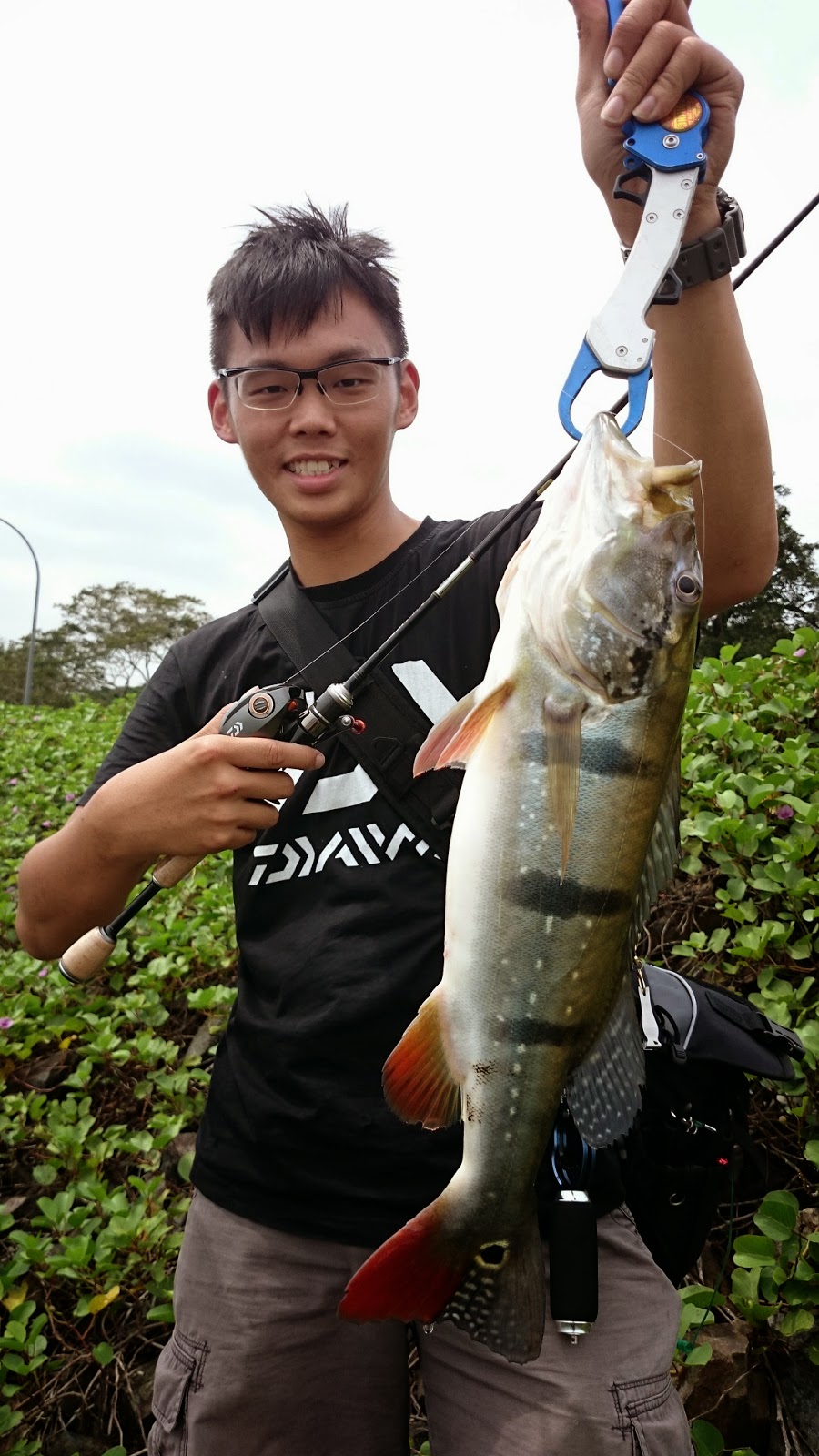It is always tempting to stay in your comfort zone and employ what is familiar. Ask any angler what is the best way to land a certain fish and you'd likely get a variety of response based on what worked for each of them.
For local peacock bass fishing many would probably tell you a form of weighted fly, a brightly colored minnow or some fast moving jerkbaits are tried and tested techniques. Walking by most anglers at the reservoir, chances are these are likely to be lures spotted being rigged onto the end of their lines.
To me, what separates a good angler from an average one, is the ability to find and land fishes even when the conditions were less then perfect. Especially so, when everyone else is on the verge of giving up and prepared to leave empty handed.
One thing i learnt through fishing, is that one can never finish learning all that there is to fishing. I too, like to stick to the tested and proven, especially when these time tested techniques are working on that day itself, however it is necessary to experiment, in order to learn. With that, i do, at times seek to employ different techniques and lure presentation that may seem out of the norm for learning and experimentation sake.
Tackle for the day: Jackson Super Trickster STC-60L-AS
Daiwa SS Air
In Japanese Bait finesse fishing, there are many techniques being employed in nabbing that next large/small mouth bass. Today i have decided to explore how i can adapt the usage of "Sumoraba (スモラバ)" into local peacock bass fishing context.
Peacock bass are not actual bass, they belong to the cichlid family. However, they bare resemblance in terms of physical shape as well as being prized targets of lure fishing fans worldwide. In Singapore, we do not have any large/small mouths and peacock bass forms the primary luring target for many. Through fishing both these species i have taken to note that techniques employed on the two species may vary and in certain situations, become polar opposites.
When i have the privilege to do sight fishing in clear waters i often make the most out of it and observe fishes' behavior towards our lures whenever i can. It is through several such occasions that i noticed natural soft presentations such as Wacky rigs, Dropshots, Sumoraba and such finesse techniques doesn't interest peacock bass as much and may only trigger a lackluster nip at times. But, as soon as you stop using those technique and give that rubber a quick hard jerk, the peacock's behavior changes completely and is likely to take an aggressive hard swipe at the lure.
So we can safely say that when the peacocks are biting, most fast moving lure is likely to fall prey to them. Thus, i'm looking into exploring slower presentations that may be required when the bite becomes slow, the fishes wary and hugging the bottom closely.
A Brightly colored Sumoraba: OSP Synchro rigged with a Jackall Cover Craw
A more natural colored one: OSP Synchro rigged with a Keitech Swing Impact
Sumoraba are basically weighted jigheads with frilly rubber skirts rigged with a soft plastic lure such as a crawfish pattern, a shad or even a worm. These lures work the best being bounced on the bottom and over structures. Another way of using the Sumoraba commonly favored by the Japanese anglers are finesse "shakes" which are tiny and light tip "shaking" of the rod which works and using your wrist to impart a minimalistic but realistic tight wiggling movement for the lure through the pulling and release of the tautness in the line. This technique can be used incorporated to the pauses during bottom hops; creativity in luring is boundless. I've found that this technique works really well on largemouths in Taiwan but the local peacock basses hardly bat a metaphorical eyelid at it.
Some of the techniques i use for the Sumoraba includes:
1) Casting it out, letting it sink to the bottom, crank in the slack, lifting the rod tip about 45 degrees towards myself and cranking in the slack while lowering the rod, repeat the lift and lower. These allows the Sumoraba to hop on the bottom and is really effective with crawfish patterns as their rearwards darting is being mimicked. The lifts creates a narrow but tall arc with emphasis on the natural drop. Lifting the rod tip and twitching the rod tip inwards created a different presentation and can be employed according to the situation.
2) As with technique #1, you can jerk/lift the rods side ways to create a low and long hop, hugging closely to the bottom. This is more useful when least emphasis on the drop/fall is desired and you are trying to create a baitfish escape behavior mimic. This technique works well for me with pauses between several moderately fast side jerk/lifts.
3) Jerk and retrieve like a minnow. The pause in between the jerk creates the falling depth in which is most often the triggering point for bites.
A Juvenile Snakehead taken on a bottom hopping スモラバ
A Green Chromide on the Sumoraba, these usually shy omnivorous fishes may turn really aggressive when protecting their nest during brooding.





















